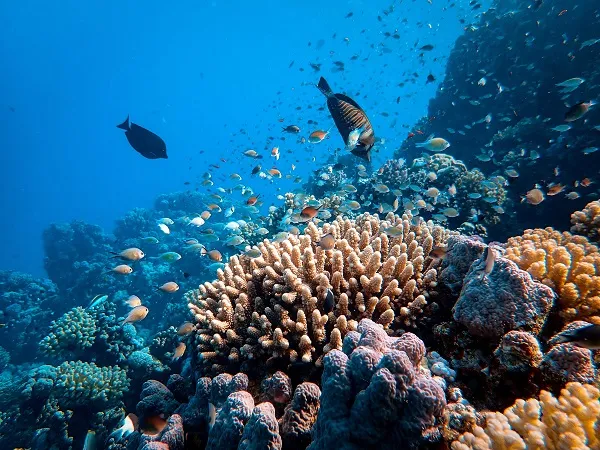The Great Barrier Reef.

The Great Barrier Reef, the biggest coral reef system in the world, is situated in the Coral Sea off the Queensland coast of Australia. It is recognized for having an extraordinary diversity of living forms, gorgeous marine life, and brilliant coral formations.
The Great Barrier Reef's salient features are listed below.
Size & Importance:
The Great Barrier Reef encircles an area of over 344,400 square kilometers (133,000 square miles), spanning a distance of nearly 2,300 kilometers (1,430 miles). It can be seen from space since it is so big.
The reef is regarded as one of the most significant and diversified ecosystems on the globe and is a UNESCO World Heritage Site.
Biodiversity:
The reef is home to a vast range of marine species, including more than 1,500 kinds of fish, 400 varieties of coral, several mollusk species, sharks, dolphins, sea turtles, and countless other aquatic animals.
10% of all fish species in the world are thought to live on the reef.
Formation of Coral:
Coral polyps, which are small animals that construct calcium carbonate skeletons, make up the majority of the reef. Over time, these skeletons build up to create the intricate and vibrant coral structures that make up the reef.
Threats & Conservation:
The Great Barrier Reef is under constant threat from various factors, such as overfishing, pollution, coastal development, coral bleaching, and climate change.
Coral bleaching, which happens when the symbiotic link between coral polyps and algae breaks down due to stress from factors like increasing sea temperatures, is one of the most urgent issues.
Coral Whitening:
When stressed corals eject the symbiotic algae dwelling in their tissues, which supply them with nourishment and brilliant colours, the phenomena of coral bleaching take place.
Corals appear white or pale when these algae are absent, thus the term "bleaching." The mortality of entire coral colonies can result from severe or prolonged bleaching, yet corals can recover from modest bleaching events if conditions improve.
Coral bleaching can result in coral death and a deterioration of the reef ecology that follows.
Climate Change Impact:
Rising water temperatures brought on by climate change are the primary cause of coral bleaching. The likelihood of more frequent and severe bleaching occurrences rises as global ocean temperatures.
The degradation of the reef is also influenced by other climatic conditions, such as ocean acidification and harsh weather. Various initiatives are being taken to safeguard and conserve the Great Barrier Reef.
These include international cooperation to reduce climate change, marine protected zones, restrictions on fishing and tourism, and research programs to better understand the ecology of the reef.
Tourism:
The Great Barrier Reef is a well-liked tourism site that draws millions of people every year who come to take part in activities like snorkeling, scuba diving, and boat cruises while admiring its beauty.
Sustainable tourism practices are essential to reducing harm to the fragile ecology, nevertheless. The Great Barrier Reef is a natural marvel of the world, but human activity and climate change are endangering it.
To preserve the survival of this exceptional ecosystem for future generations, conservation initiatives, awareness campaigns, and international cooperation are essential.
Mount Everest is our next article, click here to read more.


